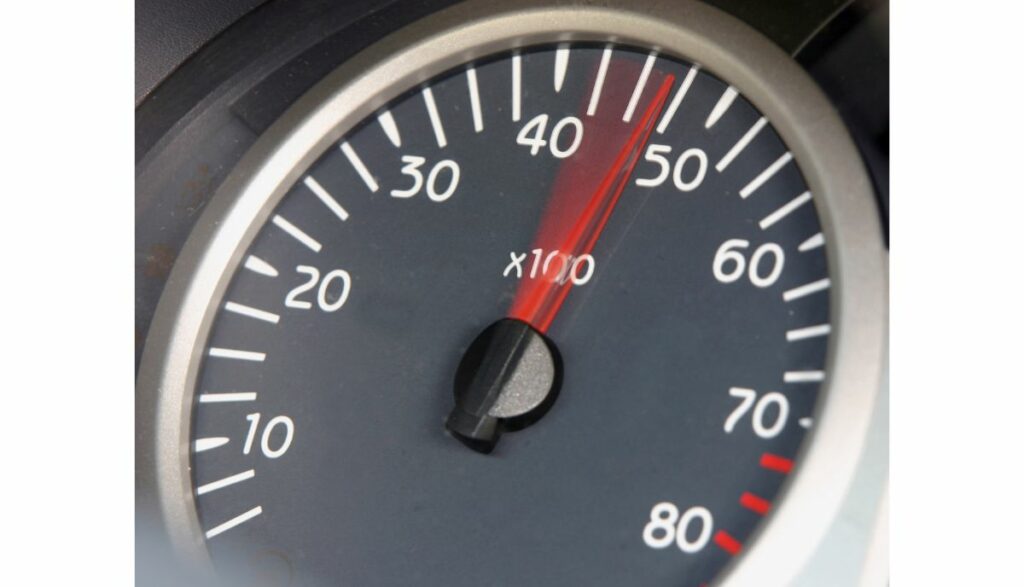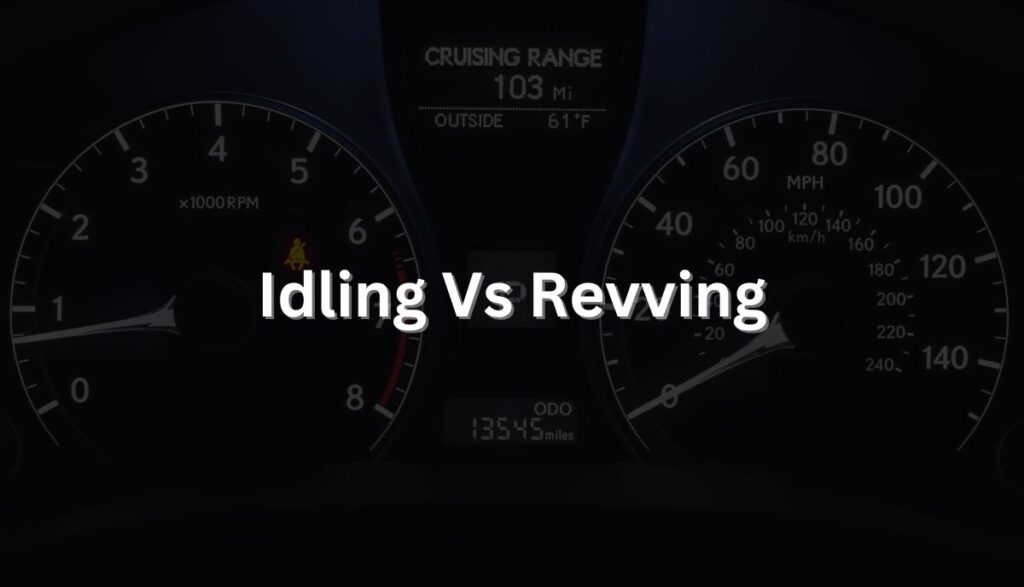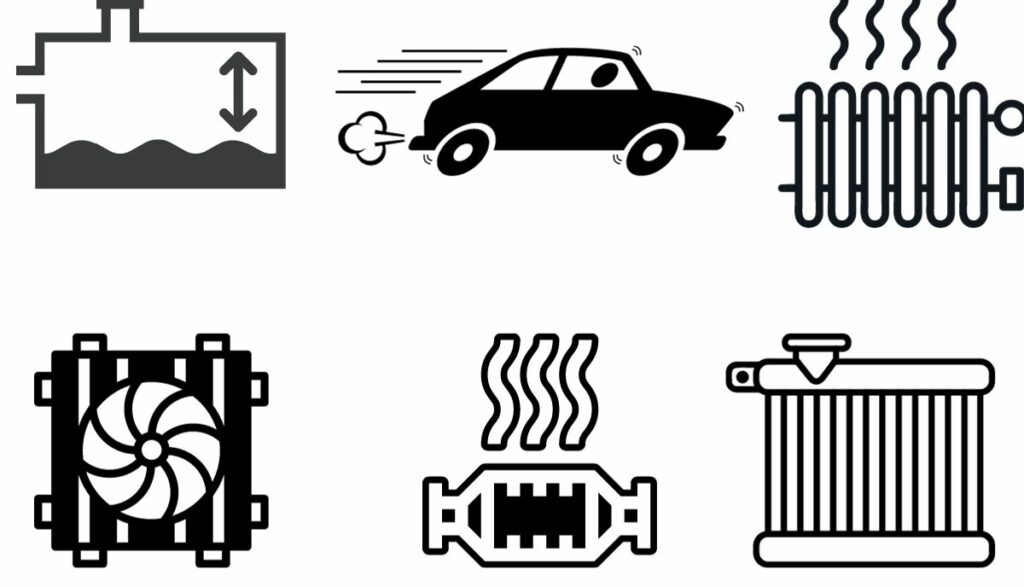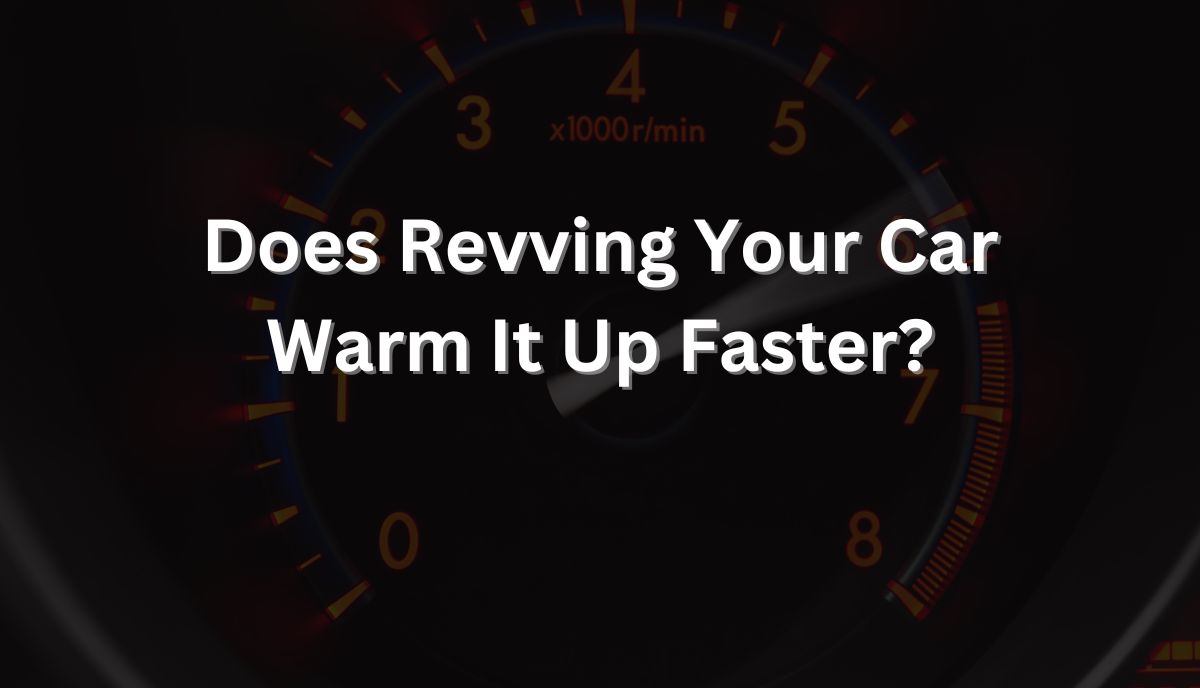Many drivers rev their cars first thing in the morning because they want to warm the engine faster. But are they right? Can you heat the engine more quickly using this method? Is it safe? The guide below has all the answers.
Revving your car can indeed warm it up faster, but it’s not the most efficient method. Idling for as little as 30 seconds achieves the same goal without excessive fuel consumption or engine strain. Modern engines circulate oil efficiently, reducing the need for extended warm-ups. Find the right balance for a quick and eco-friendly warm-up.
Why is It Important To Warm Up A Car Engine, Especially In Cold temperatures?

The warming of an engine is the act of running it for a few seconds or minutes until it attains optimal operating temperatures. Older vehicles spent more time warming up because it took them longer to circulate the motor oil and send the right mix of fuel to the engine.
Their modern counterparts are more efficient, which is why you can drive them within seconds of starting the engine. Warming a cold engine achieves the following objectives:
- It allows the oil to obtain a watery state. As a result, it can flow more efficiently to the moving parts that require lubrication, extending the engine’s lifespan in the long run.
- If engine parts have shrunk because of cold conditions, the heat will cause them to expand.
- The heat from the engine will remove the snow and ice on the windshield.
What Happens To The Engine When It’s Cold?
Surprisingly, nothing happens, at least not immediately. This is what you should know about cold engines in modern cars:
- Consumer Reports has noted that an engine doesn’t need to reach normal operating temperatures to lubricate fully. When you park the car, the oil may drain from the engine, but it will quickly circulate through the system once you turn the key in the ignition.
- They admit that letting the vehicle idle for a minute during the winter is helpful. But it’s a waste to idle the engine for multiple minutes.
- Shell Australia has confirmed that most cars are ready to go by the time you connect your seatbelt. Modern oil has superior attributes. Therefore, your concern that cold conditions will increase the oil’s viscosity, preventing it from flowing, is somewhat unfounded in the modern age.
- That said, you don’t lose anything by warming your car for thirty seconds in the morning. Smart Toyota wants consumers to dismiss the belief that warming the car shortens the engine’s life expectancy by stripping oil from the pistons and cylinders. It’s a myth.
The Difference Between Idling (Letting The Engine Run At Low RPM) And Revving (Increasing Engine RPM) When It Comes To Warming Up A Car

Idling and revving are different phenomena, although they typically achieve the same goals. According to the South Carolina Department Of Health And Environmental Control, you idle a car by letting the engine run. However, the vehicle does not move.
Revving means stepping on the accelerator and increasing the engine’s RPM and power output. Both options will warm the engine. However, idling is safer because the warming process occurs gradually. The oil has time to circulate.
It can take two minutes to warm a modern vehicle via idling, although thirty seconds are usually sufficient.
When you step on the accelerator, you burn more fuel because more of the air/fuel mixture flows to the combustion chamber. Additionally, you get more heat at a faster rate. However, you may damage a car by causing a cold engine to turn at a faster RPM before the oil can lubricate the moving parts.
How Does Combustion In The Engine Generate Heat?
- Engines burn an air/fuel mixture to produce the power that moves a car’s wheels.
- The fuel combines with the air.
- The resulting mixture enters the cylinder.
- The piston compresses the mixture.
- A spark ignites the mixture.
- The combusting air/fuel mixture pushes the piston, which turns the crankshaft.
- The Office Of Energy Efficiency And Renewable Energy has noticed that diesel engines spray fuel into hot compressed air to create a combusting mixture.
As you can see, engines work by generating small explosions. Temperatures in the combustion chamber climb to 4,500F. Cars have cooling systems that use coolant, radiators, and fans to take that heat away.
How Can Revving The Engine Potentially Accelerate The Warming Process?
Revving warms up the engine in the same manner as idling or driving. The process burns fuel to turn the engine. This is why environmentalists warn against revving and idling. Both approaches increase the car’s toxic emissions even though you’re not moving.
How Heat Is Distributed Throughout The Engine And The Vehicle’s Interior?
Energy Education has animated diagrams showing users how an engine burns fuel and air to make heat. But where does that heat go? It depends on the system:
Engine:
- A portion of the energy from the combustion chamber moves the pistons, which, in turn, rotates the crankshaft.
- The rest of the energy (roughly 65 percent, according to The American Society Of Mechanical Engineers) is wasted as heat.
- That heat will move to the cylinder’s inner and outer walls via convection and conduction.
- The heat will transition through the water in the engine jacket to the radiator at the engine’s front, where it will escape to the atmosphere.
- Engines have hollow channels that allow a mixture of water and antifreeze to collect the heat as it circulates.
Air Conditioner
- AC units have a heater core.
- The heater core takes heat from the coolant and pushes it through the air vents into the cabin.
- In other words, the core does the opposite of the radiator. While the radiator ejects the engine’s heat into the atmosphere, the core uses that heat to keep a car’s passengers warm.
What Factors Influence The Efficiency Of Heat Transfer?

- Coolant levels.
- The health of the radiator and heater core.
- The health of the cooling fan.
- The speed of the car.
- The efficiency of the exhaust system and catalytic converter (which eject gasses with temperatures as high as 1,200 F).
- The state of the cooling system (radiator cap, water pump, hoses, etc.).
- Ambient temperature.
What Should Drivers Consider Regarding The Impact Of Prolonged Idling Or Excessive Revving On Engine Wear And Longevity?
Mechanics want you to approach revving and idling cautiously because the habits are risky. In the case of idling, the following should concern you:
- Idling pollutes the environment. It generates twice the emissions as a moving car.
- Idling is expensive because of all the fuel it wastes. A study cited by Climate Change Connection concluded that Canadians could save 1.9 million liters of fuel if they shaved five minutes of idling from their routine.
- Idling can contaminate the engine’s parts, enhancing wear and tear because the practice encourages incomplete combustion.
- Prolonged idling reduces the engine’s efficiency because of the carbon accumulating on the cylinders, valves, and pistons.
- Idling is illegal in some places. Confused.com has given the example of the Road Traffic Regulations (2002) in the UK, which assign a £20 penalty to drivers caught idling.
- Prolonged idling can encourage corrosion by allowing water to condense in the exhaust.
What about Revving? Why is the practice so dangerous? The mechanics you consult will highlight the following consequences:
- Valve float issue (valves stuck between open and closed).
- Knocking the connection rod out of place.
- Wasting fuel.
- Noise pollution can attract hefty fines.
- Temperature fluctuations can compromise the engine.
- When you rev a cold car, poor lubrication can damage the engine’s moving parts.
How Can You Balance The Need For A Quick Warm-Up With Engine Health?
Many people damage their engines because they prolong the idling and revving. It only takes thirty seconds of idling to warm an engine. You can ignore revving altogether.
How Do Idling Or Revving Affect Fuel Consumption And Emissions?
Prolonged idling is a waste of fuel because it only takes thirty seconds to warm an engine to the point where you can drive the car without causing harm. This report from the U.S. Department of Energy noted that light and heavy-duty vehicles waste six billion gallons of fuel every year due to idling.
The toxic emissions from this practice are particularly problematic. The passenger vehicles that idle in traffic for a few seconds at a time are not nearly as dangerous as the long-haul trucks that idle overnight to heat the cabin and run accessories such as refrigerators and radios.
This DieselNet Technology Guide report has also highlighted the threat of railway locomotives, which you must idle when temperatures dip below 40 degrees F. Revving isn’t necessarily better because you still waste fuel and increase toxic emissions.
Is There A Trade-Off Between Faster Warm-Up Times And Fuel Efficiency?
The only saving grace for idling warm the engine is the brevity. You need only idle the vehicle for a few seconds to raise the temperature. You don’t need to rev the car. The fuel you burn while idling for a few seconds isn’t enough to make a dramatic difference to your expenditure.
Are There Any Recent Advancements In Engine Design And Materials That Have Influenced Warm-Up Times?
- Modern cars have sophisticated lubricating systems that lower warm-up times by allowing the oil to reach all the relevant components within thirty seconds.
- Modern motor oil can maintain its viscosity in lower temperatures.
- Modern oil clings to the engine’s parts. Don’t expect every ounce of oil to drain to the sump when you park the car.
- Modern cars have an electronic fuel injection that adjusts the air/fuel mixture accurately and automatically in response to different driving conditions.
- Modern vehicles have variable valve timing that improves performance, fuel economy, engine timing, and the rate at which the catalytic converter heats up.
Are There Alternative Methods For Warming Up A Car?
- Keep the vehicle in a garage in the winter.
- Buy a block heater.
- Invest in an electric blanket.
- Start the car and drive it. If you’re afraid of potentially damaging the engine, maintain a slow, steady pace. Don’t strain the engine. The engine will gradually warm up.
- Service the vehicle routinely. This allows you to drive immediately without harming the engine.

